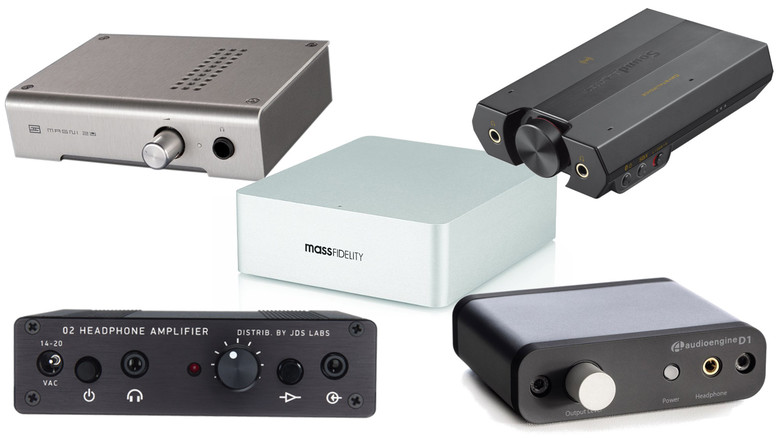
A quality digital audio converter (DAC) is essential to any audiophile PC setup, as a motherboard’s stock sound card simply isn’t designed to reproduce lossless audio. And having a quality headphone amplifier is just as important as having a pair of solid studio-grade headphones. Fully upgrade your audio setup on both accounts with one of our picks for the best DAC/amp combos and stacks.
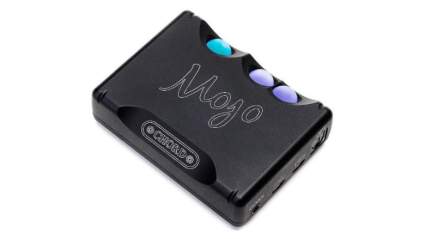
|
Amazon Customer Reviews
|
Price: $650.00 Shop at Amazon | Shop now Read our review |
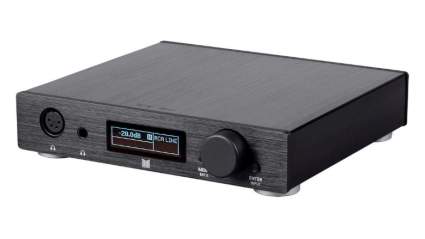
|
Amazon Customer Reviews
|
Price: $369.02 Shop at Amazon | Shop now Read our review |
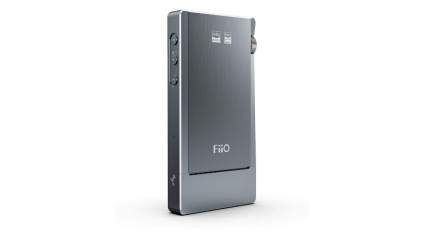
|
|
Price: $299.99 Shop now at amzn.to | Shop now Read our review |
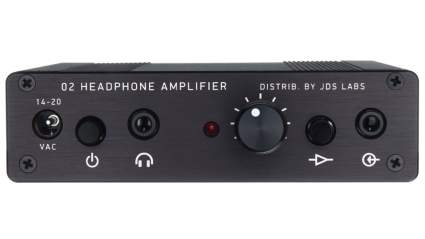
|
Amazon Customer Reviews
|
Price: $274.00 Shop at Amazon | Shop now Read our review |
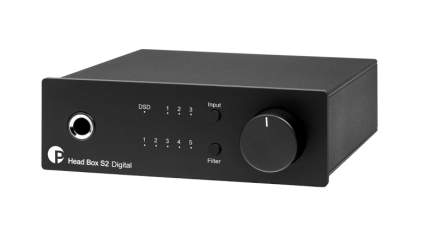
|
Amazon Customer Reviews
|
Price: $621.63 Shop at Amazon | Shop now Read our review |
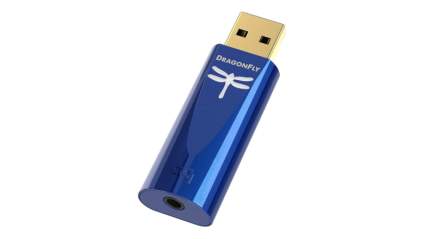
|
Amazon Customer Reviews
|
Price: $199.95 Shop at Amazon | Shop now Read our review |
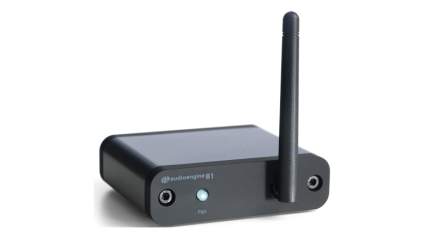
|
Amazon Customer Reviews
|
Price: $189.00 Shop at Amazon | Shop now Read our review |
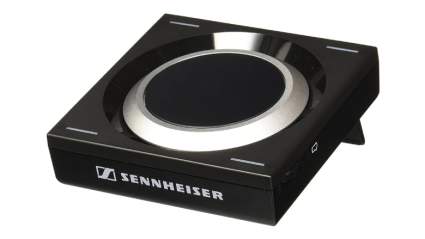
|
Amazon Customer Reviews
|
Price: $283.16 Shop at Amazon | Shop now Read our review |

|
|
Price: $249.99 Shop now at crutchfield.com | Shop now Read our review |
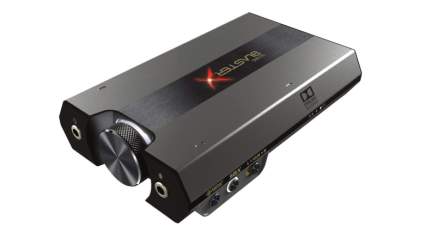
|
Amazon Customer Reviews
|
Price: $90.03 Shop at Amazon | Shop now Read our review |
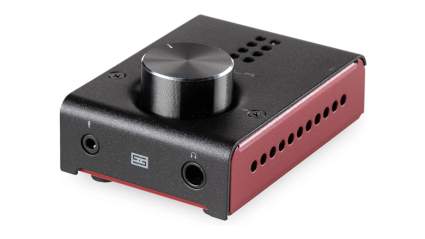
|
Amazon Customer Reviews
|
Price: $136.00 Shop at Amazon | Shop now Read our review |
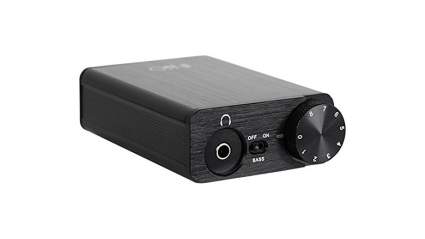
|
Amazon Customer Reviews
|
Price: $90.00 Shop at Amazon | Shop now Read our review |
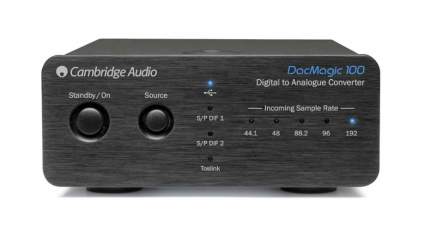
|
Amazon Customer Reviews
|
Price: $249.00 Shop at Amazon | Shop now Read our review |
-
1. EDITOR’S CHOICE: Chord Mojo 2
Pros:- Smooth 32bit/768kHz output
- Lots of inputs
- Natural frequency response
Cons:- Limited EQ controls
- High price tag
- Runs warm
The Chord Mojo 2 is a portable amp/DAC that proves that size isn’t everything. And while its built-in battery means that you could take it on the go and use it with your phone, the raw performance power of the Mojo 2 means that it would be best paired with your most high-end headphones and speakers. In other words, this device is almost too nice to leave the house with.
The standout feature of gear from Chord is that the company makes its own proprietary microchips to handle digital-to-analog conversion. It can convert digital sources audio up to 768kHz 32bit and can even play quad DSD 256 files. The mids are a standout feature, as other DACs I have reviewed will deliver a V-shaped frequency response that leaves vocals sounding muddled. But that is not the case with the Mojo 2. They are transparent and detailed. The low-end and high-end receive plenty of space in the mix too, making this a great option for those who want to hear lossless audio as it originally sounded in the studio.
The control scheme is fairly simple but it adds a nice visual touch to this compact design. The Mojo 2’s illuminated globe-style buttons change colors to display the current battery life and sample rate (the max of which will depend on which input you use and the source quality). One is for power and two are for volume. Input selection is handled automatically. This unit’s digitals inputs include coaxial, MicroUSB, USB-C and TOSLINK and its outputs are two 3.5 mm headphone jacks.
As for the Mojo 2’s internal amplifier, it gives the user the flexibility to drive beastly 800-ohm headphones (which would be quite rare today) or a simple pair of low-impedance cans. With this kind of range, it can even be used as a preamp into a nice pair of bookshelf speakers. The insanely low signal-to-noise ratio of the DAC chip ensures that this unit delivers a natural and extremely detailed sound at any volume.
Despite the small overall form factor, the Chord Mojo 2 is hands-down one of the best DAC amp combos in its price range. And while it may be an expensive choice for someone who doesn’t yet own a DAC or an amp, skipping past the entry-level options will leave you with little reason to upgrade for a long, long time.
Frequency Response: (Unlisted)
Max resolution: 768 kHz
Max Bit Rate: 32-bit
Total Harmonic Distortion: 0.0003% (@ 2.5V)
Signal-to-noise ratio: (Unlisted)
Max Output: 600 mW 30 ohms (@ 4.2V RMS)
Output Impedance: 0.06 ohms
Inputs: Coaxial S/PDIF, Dual-Data Coaxial S/PDIF, TOSLINK S/PDIF, MicroUSB, USB-C
Outputs: MicroUSB, USB-C (2x) 3.5 mm -
2. Monolith 39359 Desktop Amp Dac
Pros:- THX AAA amplification
- Balanced and single-ended outputs
- Lots of inputs
Cons:- Bulky form factor
- Bright LED can't be disabled
- Does not support higher bitrates
While you likely know Monoprice for their value-oriented cables, they also make some solid audio gear including the Monolith 39359 Desktop Amp/Dac. This device’s minimalist design translates directly into its sound signature, which is clinically clean and flat when it comes to recreating lossless audio. Simply put: the Monolith 39359 is the best DAC/amp combo I’ve found that doesn’t totally break the bank.
And while the internal dual AK4493 DACs are certainly something to talk about, the feature that truly sets this unit apart from the competition is its dual AAA-788 amplifier modules. These stereo amp modules use THX AAA to deliver linear amplification with infinitesimally low levels of noise, distortion, and power consumption. That means you can crank the gain to eardrum-shattering levels before you even begin to hear a notion of distortion (depending on your headphones). Yes, there are stacks out there that use the newer (and objectively better) THX 789 amplifier, but considering the price-to-performance ratio, the Monolith 39359 is the king of the middle price range, and reasonably the last solid-state amp you’ll ever need to buy.
Now, back to the DAC portion. When it comes to digital-to-analog conversion, the end-goal is to have nothing to talk about. And I am happy to report that 99% of music listeners will be able to enjoy their favorite tracks with virtually no colorization or distortion from the Monolith 39359. When people complain that the audio is actually too flat and clear, that’s when you know you’ve done a truly exceptional job. But talking about audio quality in this way can seem vacuous at times so let me leave it at this. The Monolith 39359 makes the kind of difference in playback that you have to hear to believe. The system does have some EQ settings and a Dirac Sensaround mode, but these are more for playing around than anything else. You will very likely end up back at the stock sound because it is that solid.
The Monolith 39359 also supports basically every digital and analog input that is worth having, making it one of the most versatile amp DACs we reviewed as well. Your primary input will likely be USB-B, through which it supports both DSD and PCM formats. However, you also have access to RCA, XLR, AES3, TOSLINK S/PDIF, and Coaxial S/PDIF inputs at varying resolutions.
You get a respectable selection of outputs as well, including both single-end and balanced outputs. If you are new to hi-fi audio, it can be difficult to know which output type will produce a cleaner sound, but it ultimately comes down to what type of headphones you are using. If you want to know more about this topic, I recommend this helpful guide from Moon-Audio (warning: it’s dense).
With this much firepower under the hood, the only two valid reasons to dislike the Monolith 39359 are that it is bulkier and pricier than the competition. Less valid reasons include wanting more EQ control (use software for that) and hating on Monoprice because it is a value brand (I will fight you over this).
Frequency Response: 10 Hz – 50 kHz single-ended)
Max resolution: 192 kHz
Max Bit Rate: 24-bit
Total Harmonic Distortion: 0.000010% (@ 32 ohms, 1mW)
Signal-to-noise ratio: <1% dB
Max Output: 6000mW RMS (in 32 ohms)
Output Impedance: <0.1 ohms
Inputs: USB-B, RCA, XLR, AES3, TOSLINK S/PDIF, Coaxial S/PDIF
Outputs: USB-B, RCA, 3.5 mm, AES3 -
3. FiiO Q5S
Price: $299.99Pros:- Lots of inputs/outputs
- Smooth 32bit/768kHz output
- Bass boost mode
Cons:- Limited EQ options
- Weak built-in mic
- Tonal balance lacks precision
Although the FiiO Q5S is meant to be a portable DAC/amp combo, its ultra-smooth audio output means it would be just at home living attached to your favorite digital audio source. The internal AK4493EQ DAC chip supports a maximum 32-bit playback at 768 kHz, which makes it a true force to be reckoned with in its price range. And the swappable AM3E amplifier module pushes the price value even further. If you want to use the internal battery and Bluetooth 5.0 support to take it on the go, then all the better, but even if you don’t the Q5S is an all-around winner.
To start, the form factor is definitely designed for on-the-go use, as it is slim, durable, and battery-powered. It has basic playback controls for Bluetooth connections and a volume knob that is easy to reach even when nestled deep in your pocket. You can choose between a coaxial S/PDIF or MicroUSB input. The outputs include two single-ended 3.5 mm outputs (amplified and unamplified) and two balanced 2.5mm and 4.4 mm outputs.
Both the single-end and balanced outputs handle lossless audio beautifully, giving it both soundstage and clarity that you won’t find in most entry-level DACs. The Q5S has an extremely low noise floor, so you won’t hear a single crackle or pop even if you plug in sensitive IEMs like the Shure SE535s. In fact, the amplifier unit is so clean and powerful that you would likely break your cans before you heard any noticeable clipping. As I mentioned previously, the amplifier can be swapped out with other modules if you want to convert to THX AAA amplification but this device still performs incredibly without this upgrade. Plus, there are easier ways to colorize your sound, including a tasteful bass boost option for those who want an enhanced but not overblown low-end experience. Just note that it slightly lowers your max volume to avoid clipping.
The FiiO Q5S may face some stiff competition in its price range but its solid performance and versatility leave you with little to dislike about this portable DAC/amp combo.
Frequency Response: (Unlisted)
Max resolution: 768 kHz
Max Bit Rate: 32-bit
Total Harmonic Distortion: <0.002%
Signal-to-noise ratio: >117 dB A
Max Output: 560mW RMS (in 32 ohms)
Output Impedance: 1 ohm
Inputs: MicroUSB, Coaxial S/PDIF
Outputs: MicroUSB, (2x) 3.5 mm, 2.5mm/4.4mm (balanced), Bluetooth 5.0 -
4. Mayflower O2+ODAC Combo RevB
Pros:- Great price-to-performance ratio
- Low output impedance works with most headphone loads
- Transparent and natural frequency response
Cons:- Frequency range could be larger
- Gain is still high in low gain mode
- Limited in/out options
The ODAC and Objective2 are two powerful pieces of audio gear designed fully open-source by audio genius NwAvGuy, who took a scientific approach to make a portable, transparent, and low-cost headphone amplifier and DAC. It is built from the top-down to be simple and effective, which means it is light on additional features and aims to instead provide the best sound possible.
For example, Mayfield Electronics manufactures the O2+ODAC with a front 3.5 mm line-in, a 3.5 mm headphone-out jack, and a mini-USB port in the back. However, I have previously seen other versions with 1/4-inch in and an RCA line out. That’s one of the benefits of an open-source design.
The ODAC has a solid 24-bit resolution and a sample rate of 96 kHz, which puts its digital signal processing on par with much pricier units. Lossless audio files reveal excellent sound staging and a balanced frequency response. The bass is tight with minimal bleeding between into the midrange. The high-end sounds are transparent and faithful to the original. The dynamic frequency range is a solid 20Hz – 20kHz.
This amp DAC makes music work for speakers as well as headphones, thanks to its low output impedance of 0.54 ohms. The exception to this statement is very sensitive headphones, as the constant gain of the amp floods the sound, even when the high gain mode on the volume knob is disabled. Despite this, this device offers <0.0165% total harmonic distortion, making for a very clean sound.
In either case, it is important to remember that because of this transparency, high-quality files sound better, and low-quality files sound worse. This DAC will not color your low bitrate files to sound better, but will otherwise bring better recordings one step closer to their original studio sound. This point might seem obvious but it bears repeating.
I may not know as much about digital signal processing as NwAvGuy himself, but I know enough to say he has made what is possibly the best budget DAC amp combo in existence today. And he has the incredibly thorough benchmarks to back it up too. At this point, the open-source design has been around long enough that if someone could have improved on it by now, they would have.
Frequency Response: 20 Hz – 20 kHz
Max resolution: 96 kHz
Max Bit Rate: 24-bit
Total Harmonic Distortion: 0.0016% (@1 Khz 150 Ohms)
Noise Floor: -105 dB (@ref 400 mV)
Max Output: 613 mW (into 33 ohms)
Output Impedance: 0.54 ohms
Inputs: MicroUSB, 3.5 mm
Outputs: MicroUSB, 6.35 mmFind more Mayflower O2+ODAC Combo RevB information and reviews here.
-
5. Pro-Ject Audio Head Box S2 Digital
Pros:- Built-in digital filters
- Smooth 32bit/768kHz output
- Plentiful input selection
Cons:- Requires drivers on Windows computers
- Bulky design
- Limited bass control
The Pro-Ject Head Box S2 Digital is a fairly hefty DAC/amp combo whose sturdy aluminum casing can take up a decent bit of space on your desk. It, however, is worth the intrusion, as this DAC box can decommission your computer’s low-quality sound card for good. The Head Box S2 offers clear digital 32bit/768kHz output for under $400, making it a serious competitor in its price range.The Head Box S2 has three inputs, an asynchronous USB B port, an S/PDIF port, and a Toslink optical port. There is an RCA input for use an amp, but you won’t find any 3.5mm cable ports on this device. This device outputs strictly to a 1/4-inch headphone jack. Obviously, you can use an adapter if you need to, but you should be warned that longer cables and more connection points mean more signal degradation.Cables aside, the Head Box S2 delivers an accurate and pure sound. Its internal ESS Saber ESS9038 DAC outputs 14bit/192kHz audio through optical and coaxial input, and 32bit/768kHz decoding through its USB B port. Its frequency response provides ample space for high-end sounds and it has five digital filters pre-configured so you can shape the sound to your liking. The filters don’t offer a lot of bass control, though, so we recommend either handling EQ elsewhere on your chain or sticking to a neutral sound signature.The headphone amplifier is quite impressive as well, offering a total 11 dB of signal gain that can be adjusted and monitored on the front display panel. And even if you crank that amp to the max, you won’t hear a single pop or crackle from the electronics as the S2 has an impressive 110 dBV signal-to-noise ratio. You are equally covered if you use low-impedance headphones, as the S2 has a low total output impedance that allows you to drive low-impedance headphones without adding any harshness to the sound. This was a serious problem with the Head Box SE2, as documented on the Head-Fi.org forums.Frequency Response: 20 Hz – 80 kHz
Max resolution: 768 kHz
Max Bit Rate: 32-bit
Total Harmonic Distortion: 0.002%
Signal-to-noise ratio: -110 dBV
Max Output: 725mW (into 32 ohms)
Output Impedance: <1 ohm
Inputs: USB-B, Coaxial S/PDIF, TOSLINK S/PDIF
Outputs: USB-B, 6.35 mm, RCAFind more Pro-Ject Audio Head Box S2 information and reviews here.
-
6. AudioQuest Dragonfly Cobalt
Pros:- Smooth 24bit/96kHz output
- MQA compatible
- Plug-and-play with phones and PCs
Cons:- Limited inputs/outputs
- No volume control
- Loose connections
The AudioQuest Dragonfly Cobalt may not have the commanding presence of a desktop DAC amp with fancy knobs and vacuum tubes but it is still a highly capable tool for bypassing your weak internal sound cards in a variety of audio sources. In fact, some might argue that the simplicity of the Dragonfly Cobalt makes it even more beautiful than, say, the Dragon Inspire IHA-1. I’ll leave that up to you, though.
This inline device is about the size of a flash drive but inside its ES9038Q2M DAC chip is capable of delivering a larger than life sound. The Dragonfly Cobalt sounds particularly lifelike because its DAC chip employs a minimum-phase slow roll-off filter. This gives the sound a clear and natural envelope that emulates the workings of the human ear, except louder. The built-in amp is plenty capable of feeding power-hungry headphones but it does not have enough power for 600-ohm headphones like the Beyerdynamic DT 880. You can only power headphones up to about 300 ohms.
This puts the Cobalt in a somewhat strange place, as the signal may sound too loud on some low-impedance headphones. Since the Cobalt doesn’t have any built-in volume control, this can be somewhat problematic. Thankfully, this can usually be solved from the source device. This amp DAC has only one built-in connection, USB-A, but it comes with a “DragonTail” connector that adapts it to fit USB-C as well. This means you can use it on both computers and select smartphones. Support for Tidal’s MQA format makes it even more tempting for smartphone owners, but be aware that only some apps will work with the Cobalt.
But you don’t need to be a Tidal subscriber to get the full use out of this DAC amp. FLAC audio still sounds pristine through the Cobalt. And while I couldn’t find an official specs sheet for the Cobalt, John Atkinson’s benchmarks over at Stereophile reveal that Dragonfly’s tech is legit. The main downside of this device is that it doesn’t offer much for the knob tweakers that don’t know how to use Audio Precision software.
But this brings us back to our thesis: sometimes simplicity is beautiful. But I will offer one criticism of the Cobalt’s design. Because this is an inline device, it goes through the same kind of wear and tear as your average headphone cable (minus getting run over by a desk chair). Not only does this cause its connections to loosen over time but it also begs the question: is this how we want to treat our high-end audio devices?
Frequency Response: (Unlisted)
Max resolution: 96 kHz
Max Bit Rate: 24-bit
Total Harmonic Distortion: <0.003%
Signal-to-noise ratio: >120 dB FS
Max Output: 2.1V RMS
Output Impedance: (Unlisted)
Inputs: USB-A
Outputs: 3.5 mm -
7. Audioengine B1
Pros:- Wide frequency response
- Smooth 24bit/192kHz output
- Small footprint
Cons:- Limited outputs
- Struggles with high impedance headphones
- Tonal balance lacks precision
The B1 from Audioengine is a standout value, as it offers precise digital-to-analog conversion at a price that is more affordable than comparable units. This USB DAC is plug-and-play with Mac or PC, making it one of the easiest ways to bring your FLAC and Apple Lossless files to life.
The sturdy metal casing has a compact footprint and a simple interface, with only a volume knob, power button, and a headphone jack on the front. On the back, there is one USB and one optical S/PDIF input, plus an RCA output.
The front 3.5mm headphone port is your output option for headphone listening. Yes, this DAC has a built-in Bluetooth receiver (with aptX HD support) but a 1/4 inch jack would have also been a nice addition.
The B1’s 57-ohm output impedance will not work with some high impedance headphones (300 ohms or more), but when the impedances match up, the amplifier is excellent.
For USB audio the B1 goes up to a 24-bit resolution and a sample rate of 96 kHz, which are standard specs for a DAC that aims for smooth and accurate conversion of data to sound. These two figures are commonly measured with a dual rating, in this case, 24/96. This rating puts the audio fidelity of the B1 at the level of HD Blu-Ray audio. The B1 is characteristically low in jitter, and also has a high signal-to-noise ratio of 110dB makes for a clean sound with minimal digital distortion.
The sonic accuracy of music played through the B1 is tighter, offering more room for individual frequencies to flourish, plus a wider soundstage. The frequency response of 10Hz – 25KHz also contributes to the added depth of the sound, and although it takes a trained ear to pick up this added complexity, it will immediately shine on that one song you’ve heard for the thousandth time.
While I have no direct complaints about the sound, I am left feeling like something is missing from the audio experience of the B1. True individual frequencies will stand out under the B1’s subtle influence, but after comparing it to slightly pricier DACs, it is apparent that this system could perform even better. Such begins the slippery slope of audiophile gear.
But the vast world of potential improvements aside, the D1 is where the value is, as the unit’s solid amplification and compact footprint make it a great starting point for budding audiophiles
Frequency Response: 10 Hz – 20 kHz
Max resolution: 192 kHz
Max Bit Rate: 24-bit
Total Harmonic Distortion: 0.0025% (1 kHz FS 96 kS/s)
Signal-to-noise ratio: >100 dBV
Max Output: 2.0V RMS
Output Impedance: 57 ohms
Inputs: USB-B, TOSLINK S/PDIF, Bluetooth 5.0
Outputs: USB-B,3.5 mm, RCA -
8. Sennheiser EPOS GSX 1000
Pros:- Smooth 24bit/96kHz output
- Virtual 7.1 surround sound
- Wide frequency response
Cons:- Limited outputs
- Weak built-in mic
- Limited EQ controls
The EPOS GSX 1000 comes from Sennheiser, makers of some of the best reference headphones around, so it should come as no surprise that this DAC amp combo is one of the best around. True, it may be marketed toward the gaming crowd, but chances are that its 24-bit/90 kHz digital playback is much better for playing music than your computer’s built-in sound card. When you offer price-conscious performance like this, a device like the GSX 1000 can offer a surprising amount of utility for your PC setup.
The GSX 1000 has a built-in headphone amplifier that drives headphones with impedance ratings between 16 and 150 ohms, with the sweet spot seeming to be around 50 ohms. Note that this amp only affects the front 3.5 mm headphone jack while the rear 3.5 mm line-out port goes directly to the DAC. It has a 3.5 mm microphone input and a 3.5 mm line-out as well.
Not only does it provide clear and accurate sound but it also employs binaural rendering to recreate 7.1 virtual surround sound. This feature works best with movies and games though, since most recorded music is meant to be heard in stereo sound.
Another thing to note about the GSX 1000 is that it requires no drivers. It is simply plug-and-play. But on the other hand, that also means that there aren’t any extra settings beyond what you can do through its LED touchscreen. The LED touchscreen has buttons for switching outputs, an EQ button with four preset options, a reverb button, and a surround sound mode button. It has a built-in microphone too but most anything else would be better if you already have one.
If you are looking for a DAC/amp specifically for enhancing music, then your money may be more wisely spent on something that doesn’t lean so hard on binaural rendering. If, however, you want a DAC that can deliver an edge up in games while overall clarifying your sound, then the GSX 1000 is a solid pick.
Frequency Response: 1.5 Hz – 48 kHz
Max resolution: 96 kHz
Max Bit Rate: 24-bit
Total Harmonic Distortion: 0.005% (@ -3 dBFS)
Signal-to-noise ratio: >110 dBV
Max Output: 1.0V RMS (in 32 ohms)
Output Impedance: (Unlisted)
Inputs: MicroUSB
Outputs: MicroUSB, (2x) 3.5 mm -
9. Mass Fidelity Relay Hi-Fi Bluetooth DAC
Price: $249.99Pros:- Bluetooth wireless gets long range
- aptX codec delivers solid 24bit/48kHz sound
- Easy setup and pairing
Cons:- Higher price tag
- Additional inputs/outputs would be nice
- Poor quality on non-AptX compatible devices like iPhones
There is a certain romanticism in laboring over analog equipment: powering on, plugging in, dropping the needle. For high-quality digital sources, however, our only expectation besides quality is convenience and Mass Fidelity delivers both with the Relay, a high-quality Bluetooth streaming solution.
The Relay is sleek, light, and beautifully machined from solid aerospace-grade aluminum, making it a stylish addition to any hi-fi setup.
It can be set up in under a minute, as it has just one RCA output to plug in, while the input is handled by a small Bluetooth antenna on the back. Bluetooth pairing is quick and convenient, plus it even supports extra features like pairing to multiple devices for gatherings, and fast re-pairing for daily use.
The Relay can decode SBC, A2DP, and AAC, but provides the best sound over aptX, making this a great choice for Android users. This does cause a minor problem for iOS devices, as even the newest iPhone 6s only supports the lower quality A2DP or AAC formats.
At its best, the Relay performs at 24bit/48kHz, which is roughly equivalent to CD quality. While this does mean that the Relay is outclassed by pricier wired DACs for smoothness, it is still nothing to scoff at for a Bluetooth DAC.
In fact, 44.1 kHz is the ideal sample rate for most media, as a majority of listeners will not be able to distinguish between this and a higher quality sample rate.
This is because 44.1 kHz is accurate enough to cover the exact frequency range of human hearing, and though some barely perceptible dynamic range is lost, the added function of wireless connecting offers a fair trade-off for most people.
This is especially true considering that the Relay sounds better coming through hi-fi speakers than most other digital audio sources connected by wires. I confirmed this by playing aptX audio from Samsung Galaxy S5 through the sample unit I received into my vintage BSR hi-fi system and then comparing it to a wired connection from my S5’s headphone jack into the same system.
The bottom line is that the Relay’s microprocessor far outclasses the sound card of my smartphone, and provides much better amplification plus improved clarity. And then there’s the best part: it lets me stream from anywhere in my living room at low latency.
Even with a potentially lower sample rate than you could have from a wired connection, the Relay has a phenomenal sound that is both accurate and detailed. With a 112dB signal-to-noise ratio and only 0.0001% THD (total harmonic distortion), neither noise nor distortion will come between you and your favorite tracks, which ring through accurately and with a new clarity.
All of the tracks I tested on my Relay came through more full and rounded than they did from being directly connected to my aging speakers, the added transparency of the sound helped reveal new details in my music.
It is easy to write off this wireless DAC because of the inherent limitations of wireless audio. But before you do, I would certainly recommend giving it a try, as I never realized how cool it is to stream wireless audio at such high quality, especially at parties.
Wireless DACs are a fantastic idea, and though it makes so much more sense to use in my living room rather than my studio PC, the Relay allows me to finally bring my high-quality music out of my restricting little cave. If you want to do the same, then this is one of the best DAC/amp combos under $300.
Frequency Response: 10 Hz – 25 kHz
Max resolution: 192 kHz
Max Bit Rate: 24-bit
Total Harmonic Distortion: 0.0025% (1 kHz FS 96 kS/s)
Signal-to-noise ratio: >110 dBV
Max Output: 2.0V RMS
Output Impedance: 2 ohms
Inputs: USB-B, TOSLINK
Outputs: 3.5 mm, RCAFind more Mass Fidelity Relay Hi-Fi Bluetooth DAC information and reviews here.
-
10. Creative Sound BlasterX G6
Pros:- Smooth 32bit/384kHz output
- Virtual 7.1 surround sound
- Low noise floor
Cons:- Default settings colorize sound
- Requires a firmware update out of the box
- So-so materials
Despite not being a dedicated DAC, Creative’s Sound BlasterX G6 is a multi-purpose audio powerhouse whose main draw is beautifully smooth digital decoding. It offers a smooth and jitter-free 32bit/384kHz digital output when you connect an analog source. The signal-to-noise ratio is a solid 130dB, but the stock audio settings for the G6 are a slightly colored sound with boosted treble frequencies. The Sound Blaster Connect 2 software can be used to set the G6 to a more neutral sound or you can go all-in and tweak the signal further.
The software can also be used to set filters, enable dynamic range control, and simulate virtual 7.1 surround sound. There are also audio presets for gaming that are designed to enhance tactical audio cues like footsteps without muddying the overall mix of the game. The sample unit of the G6 I received required a firmware update out of the box but this was easy to handle through the software.
The Creative G6 has several connections including a 3.5 mm headphone jack, a 3.5 mm line/optical-in, and a 3.5 mm mic-in. Note that only the front 3.5 mm jack uses the DAC. The rear 3.5 mm line-in will bypass the amp and only uses the DAC. The headphone amplifier is a helpful addition to the package, which has a high-low gain switch that you can use to switch between high-impedance and low-impedance headphones.
The sample unit I was sent to review handled my large collection of headphones excellently, though I don’t have any over-ear monitors to test the unit to its limit. One downside for headphone aficionados is that two 3.5mm outports do not offer major flexibility for headphone options, but this can be easily fixed with adapters.
Simply put, if music is your one and only passion, the extra features of the G6 might go to waste if you picked it over a dedicated DAC. But if you are a general media buff who devotes equal time to gaming, music, and movies, then the G6 offers a playground of extra features that will keep you busy for hours. For a do-it-all combo unit on a budget, you really can’t ask for more.Frequency Response: (Unlisted)
Max resolution: 384 kHz
Max Bit Rate: 32-bit
Total Harmonic Distortion: 0.0006%
Signal-to-noise ratio: >110 dBV
Max Output: (Unlisted)
Output Impedance: 1 ohm
Inputs: MicroUSB, 3.5 mm
Outputs: MicroUSB, (2x) 3.5 mmFind more Creative Sound BlasterX G6 information and reviews here.
-
11. Schiit Fulla E
Pros:- Low noise floor
- Smooth 24bit/192kHz output
- Low output impedance
Cons:- Mediocre audio bitrate
- Amp offers low gain
- Bright LEDs can't be disabled
Even though the Schiit Stack is already considered to be one of the best DAC amp combos under $300, Schiit simply had to go and make high-bitrate audio even more affordable. Their Fulla E is both a DAC and a headphone amplifier in one compact package and for the same price as either the Modi 3 or the Magni 3 on their own.
It has a rear 3.5 mm output that can boost your digital signal by up to 4.6dB via a prominent volume knob. This rear knob has a high 10,000-ohm impedance, which allows it to properly drive high impedance headphones like the 600-ohm Beyerdynamic DT 990. If you wish to run normal headphones through this amp, then you are better off using the front 3.5 mm headphone jack. It has a low output impedance of 0.5 ohms, which is better for lower-power headphones.
The Fulla E has a low noise floor whether you use the amplifier or bypass it using the front 3.5mm output. On the back of the device, you have a 3.5 mm input so you can conversely bypass the DAC and use the Fulla E as just an amp. It has two USB-C inputs, one for data and one for power. If you plug the device into a PC for power, it will turn on and off with the audio source.
Frequency Response: 20 Hz – 20 kHz
Max resolution: 192 kHz
Max Bit Rate: 24-bit
Total Harmonic Distortion: <0.001% (@ 1.0V RMS)
Signal-to-noise ratio: >108 dBV
Max Output: 2.0V RMS
Output Impedance: 0.5 ohms
Inputs: USB-C, 3.5mm
Outputs: USB-C, 3.5 mm -
12. FiiO E10K USB DAC and Headphone Amplifier
Pros:- Bass boost mode
- Smooth 24bit/96kHz output
- Low noise floor
Cons:- Not battery powered
- Bright LED can't be disabled
- Limited inputs
Many know the FiiO E10K as a crucial stepping stone into the world of high fidelity audio. As one of the cheapest DACs to still provide a decent sound, the FiiO E10K is a solid option for audio enthusiasts on any budget.
The sound that you get from FiiO E10K doesn’t quite stack up against pricier options like the Pro-Ject Audio Head Box DS or the JDS Labs O2+ODAC but it will still likely beat out the sound card in your PC or laptop. The E10K processes audio at a sample rate of 24bit/96kHz with a low noise floor and a linear internal filter.
There is no discernable delay, jitter, or clipping, even when you use the internal amp to crank up its digital output to max. You can only plug it into digital sources with its lone micro USB port, but you can output the sound to coax, 3.5mm line or 3.5 mm for headphones. There is a switch on the back for high or low gain but you will want to leave it on low for most uses.
There’s not much else that can be said to make the FiiO E10K stick out from the pack, as it is ultimately pretty feature-light. It will not blow your ears to the back of your head but you will have to hear it to believe just how much sound you can get for this price.
Frequency Response: 20 Hz – 20 kHz
Max resolution: 96 kHz
Max Bit Rate: 24-bit
Total Harmonic Distortion: <0.006%
Signal-to-noise ratio: >108 dB
Max Output: 200 mW (in 32 ohms)
Output Impedance: 1.04 ohms
Inputs: MicroUSB
Outputs: MicroUSB, (2x) 3.5 mm, Coaxial S/PDIFFind more FiiO E10K USB DAC and Headphone Amplifier information and reviews here.
-
13. Cambridge Audio DACMagic 100
Pros:- Natural frequency response
- Incoming sample rate display
- Lots of speaker inputs
Cons:- No headphone amplifier or inputs
- Audio bitrate could be higher
- Input selector resets when you turn it back on
Cambridge Audio’s DACMagic 100 is a no-nonsense DAC that combines a solid selection of in/out ports with a high-quality Wolfson 24-bit DAC to make all of your high-quality digital content compatible with your killer vintage speaker setup. You can connect to it from USB, one of two digital coax ports, or a Toslink optical port. It will be difficult to use this DAC with headphones as it lacks both a headphone amplifier and headphone inputs.
This device also doesn’t have a headphone amplifier built in. If you know that you won’t need to amplify your signal for a pair of signal hungry headphones, you can get more value for your dollar by opting for the DACMagic 100, which puts all of its resources into delivering clean 24-bit/96kHz audio.
On that note, audio coming through the DACMagic 100 sounds pristine. FLAC and ALAC files are delivered with a wider soundstage and a full frequency range. This device has a frequency range of 20Hz to 20kHz. This seems pretty basic when devices can capture much more, but most of those frequencies are well beyond the range of human hearing. The device shows you the sample rate of the incoming data, which is a bit of a gimmick but neat to see in action.
The DACMagic 100 marks a substantial improvement over most baked-in soundcards but it’s important to temper your expectations. This is Cambridge Audio’s entry-level DAC, which would be promptly blown away when compared to any of their top of the line equipment. Still, if you want a basic DAC that is geared towards speaker listening rather than headphone listening, then this is a solid pick.
Frequency Response: 20 Hz – 20 kHz
Max resolution: 192 kHz
Max Bit Rate: 24-bit
Total Harmonic Distortion: 0.0025% (@ 1 kHz 0 DBFS)
Signal-to-noise ratio: -110 dBV
Max Output: 725mW (into 32 ohms)
Output Impedance: <50 ohms
Inputs: USB-B, (2x) Coaxial S/PDIF, TOSLINK S/PDIF
Outputs: USB-B, RCAFind more Cambridge Audio DACMagic 100 information and reviews here.
Do You Really Need a DAC and an Amp?
If you are just getting started down the path of the audiophile, you may only have a nice media player or a solid pair of headphones. But there is so much more to the equation if you want to achieve truly lossless audio quality.
DACs are highly preferred over the internal equipment in your computer or MP3 player, as these dedicated units have better conversion chips, power supplies, and output circuitry than what is in your media device.
Upgrading to an external DAC will also improve amplification since they usually pair with an amplifier unit. Together, the two improve the dynamics, sound staging, volume, and overall detail of your audio.
All of the DACs we listed include a built-in headphone amplifier, save for stacks (like the Schiit stack) which are comprised of two discrete units. This way you can drive both high and low-impedance headphones with one device.
Is a Budget DAC and Amp Even Worth It?
I get this question a lot but it is a difficult one to answer. After all, there is no ceiling in the world of audio quality and budget is an always-moving target.
For this reason, it is entirely possible that any reader who is well-versed in the top-tier range of audiophile tech may already be drafting me a grumpy email for leaving out the major players of the premium sound industry.
But if you're one of those, you can save your energy. I am simply not going to recommend the $2.2 million Pivetta Opera Only to someone in search of a combo unit.
Buying a high-end amp or DAC is just like buying a designer pair of shoes. The details of the shoe may look amazing on display but you won't be focused on them at all when you wear them to the grocery store.
In the same way, high-end audiophile gear can only improve playback quality to a marginal level (at least with our mortal ears). This means buyers of high-end gear will experience massively diminishing returns, as explained at the Audiophile Review. Additionally, these high prices are simply unreasonable for 90% of audio enthusiasts.
Until you get a feel for the type of sound signatures you actually prefer and what kind of "endgame" setup you want to save up for, it is perfectly fine to settle for a DAC amp combo that you can actually afford. And to that point, it doesn't matter if that is $50 or $500. At the end of the day, any DAC is going to be better than your PC's sound card.